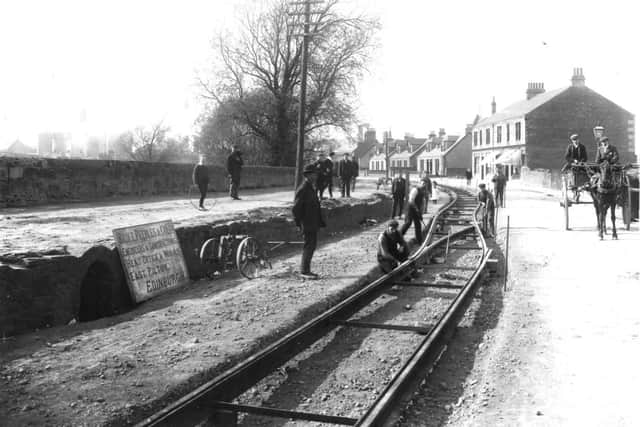Looking back with Ian Scott on the birth of the Falkirk Trams
and live on Freeview channel 276
Quite right too because I discover to my surprise that it is over 12 years since I did write about that topic. So here we go back to the turn of the century when vehicles first rolled round the circular.
Before 1898 horse drawn brakes and buses holding up to 36 passengers linked the town with the surrounding villages, but in the spring of that year a local businessman formed the Falkirk and District Motor Car Company Ltd with three eight-seater Daimler cars running from Falkirk to Stenhousemuir at half-hourly intervals. In June of the same year they were following the familiar circular route from Falkirk through Grahamston, Bainsford, Carron, Stenhousemuir, Larbert and Camelon back to Falkirk. The company was wound up two years later, but by then proposals to cover the same route using electric trams were being prepared for Parliament's approval.
Advertisement
Hide AdAdvertisement
Hide AdThe major problem for the proposers was the need to replace wooden ‘bascule’ or lifting bridges over the Forth and Clyde canal Bainsford and Camelon and the stone bridge over the Carron close to the ironworks. Planning difficulties delayed the project and in 1904 the original proposers were replaced by a new company owned by Bruce Peebles, owners of the Scottish Central Electric Power Company which had been formed to provide power for the County of Stirling. They owned the new Bonnybridge Power Station which meant that Falkirk’s own Power Station would miss out on the business.


Construction work began in January 1905 from Larbert Cross with rails laid to a unique four-foot gauge with 21 double-track loops to allow passing. The erection of the overhead power supply began in May of the same year and progress was very rapid. The new Carron Bridge cost nearly £4,000 which the Town Council funded, assisted by Carron Company and the Tramway Company. It was completed in September 1905. The Motherwell Bridge Company supplied two new turntable bridges for the canal crossings designed to open in under one minute to allow boats to pass through.
Fifteen French-built double-decker tramcars were in Falkirk by the autumn and on Sunday, October 21, members of the Town Council made the first circular journey through streets thronged by hundreds of enthusiastic Falkirk bairns.
It was the beginning of a love affair for Falkirk people, for seldom has an institution provoked such retrospective affection and sincere regret at its untimely demise in 1936. But that was a long time in the future. In the first year of operation over 3.5 million passengers were carried, and though the numbers did reduce from this very high figure the trams were firmly established as the major mode of transport within the Falkirk area. The cheap and swift service now available to the people in the villages brought them in droves to the shopping centre of Falkirk, which rapidly resumed its traditional role as the market centre of east Stirlingshire.
Advertisement
Hide AdAdvertisement
Hide AdA new tram service was introduced in 1909 linking Falkirk High Street to Laurieston and it survived until 1924 when the whole system was under increasing pressure from the expanding bus network. Despite major investment in new single decker trams and line refurbishment the writing was on the wall and 1936 brought the end.
And that takes us back to last week’s article.